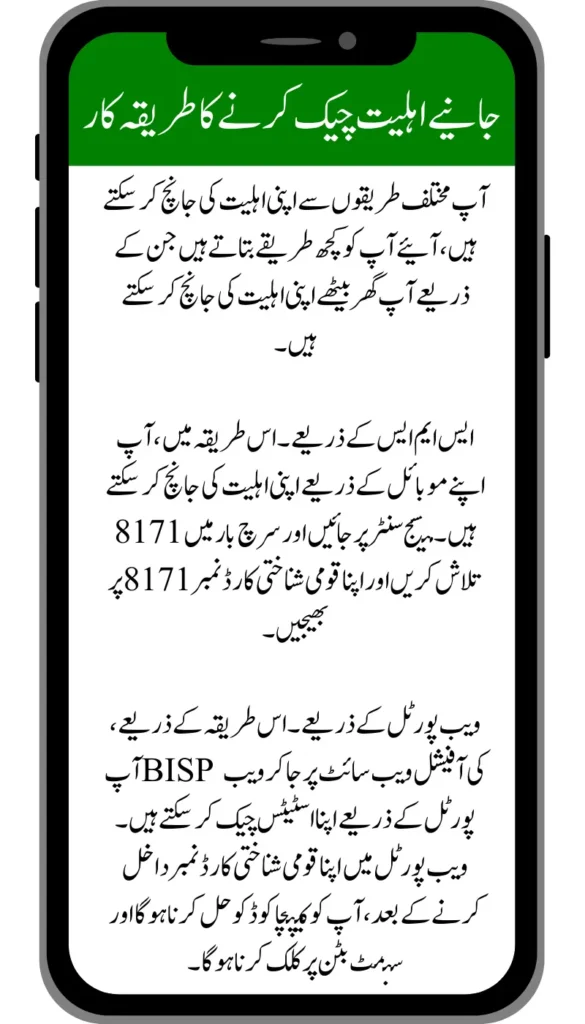Ehsaas Program New Payment has been announced to provide continued financial relief to low-income families across Pakistan. In this new cycle, registered and verified beneficiaries can receive their assistance after confirming eligibility through the 8171 SMS service or the official Ehsaas web portal. The payment is designed to help families cover essential needs like food, education, and healthcare at a time of rising costs. Beneficiaries should ensure their CNIC details and biometric verification are up to date to avoid delays or payment issues.

If you are a beneficiary or someone looking to benefit from the program, here’s everything you need to know about the Ehsaas Program New Payment Schedule and Updates.
You can also read: BISP 8171 ReVerification for Sep 2025 payment
Ehsaas Program Payment Schedule Sep 2025
The distribution of Ehsaas Kafalat payments in June 2025 is being carried out in three structured phases to avoid overcrowding and ensure smooth delivery of funds:
- Phase 1: Started in late May 2025, covering key cities and districts with large numbers of beneficiaries.
- Phase 2: Running through early to mid-July, targeting semi-urban and smaller towns.
- Phase 3: Scheduled to begin from Sep 19, 2025, covering the remaining remote or rural areas.
The phased rollout allows local governments and BISP teams to manage logistics efficiently while ensuring safe and transparent payments.
You can also read: Ehsaas Program CNIC Check Online Registration through 8171
Revised Payment Amount Now Rs. 13,500
In light of rising inflation and the economic pressure on low-income families, the government has officially increased the quarterly stipend under the Ehsaas Program:
- Old Amount : Rs. 10,500
- New Amount : Rs. 13,500
This 28% increase is part of a broader plan to protect vulnerable families against food insecurity and rising living costs. The increased amount will be deposited into beneficiary accounts according to the phase-wise schedule.
You can also read: Benazir Taleemi Wazaif Registration Has Officially Started
Check Your Eligibility for 13500 Payment
You can check your eligibility through various methods, let us tell you some ways through which you can check your eligibility by sitting at home.
Through SMS. In this method, you can check your eligibility through your mobile. Go to the message center and search for 8171 in the search bar and send your national identity card number to 8171.
Through the web portal. Through this method, you can check your status through the web portal by going to the official website of BISP. After entering your national identity card number in the web portal, you have to solve the captcha code and click on the submit button.
You can also read: Benazir Taleemi Wazaif Scheme for Students Get Monthly Educational Support
Where to Collect Your Ehsaas Program Payment
Beneficiaries can collect their Ehsaas Kafalat payments through the following channels:
Designated Campsites
Special campsites have been set up in schools, community halls, and public places. These camps have biometric systems and trained staff to help beneficiaries withdraw their payments.
Bank ATMs
Those with registered Ehsaas bank accounts can directly withdraw payments from HBL (for Punjab, Sindh, Balochistan) or Bank Alfalah (for Khyber Pakhtunkhwa, AJK, and GB).
Retailer Shops / POS Machines
Registered BISP/Ehsaas retailer shops equipped with Point of Sale (POS) machines also allow biometric withdrawal.
Digital Wallets (Pilot Areas Only)
Some users may receive payments through Easypaisa or JazzCash in pilot regions. This method is still under testing and not yet nationwide.
You can also read: Benazir Income Support Program CNIC Check By Online Method 2025
Conclusion
The Ehsaas Program June 2025 update is part of the government’s continued effort to combat poverty and help Pakistan’s most deserving citizens. With increased payments, more efficient disbursement mechanisms, and an expanded registration network, the program aims to provide genuine relief to over 9 million families.
We strongly advise all potential beneficiaries to check their status, collect payments on time, and avoid any fraud or deductions. Only use official portals and helplines to stay informed.
You can also read: Latest FBR Jobs Alert 80+ Government Vacancies Announced Countrywide
Frequently Asked Question (FAQs)
What is the Ehsaas Program?
The Ehsaas Program is a government initiative that provides quarterly cash stipends to deserving and low-income families, especially women, to reduce poverty and financial hardship.
What is the latest payment amount for June 2025?
The government has increased the quarterly stipend from Rs. 10,500 to Rs. 13,500 starting from June 2025.
How do I check my eligibility for Ehsaas payments?
There are two ways:
- SMS: Send your CNIC number to 8171
- Online: Visit official website and enter your CNIC
I am eligible. Where can I collect my payment?
You can collect your payment through:
- Designated Campsites
- HBL / Bank Alfalah ATMs
- Ehsaas Retailer Shops (POS machines)
- Digital Wallets (pilot basis in some areas)
What documents are required to collect the payment?
You must bring your original CNIC. If collecting for your child’s education stipend, bring the child’s B-form too.
Can I register if I was previously ineligible?
Yes. You can now register or reapply through:
- Nearest Ehsaas Registration Center
- Dynamic Survey under NSER
Bring your CNIC and supporting documents like proof of income or family data.
What should I do if I face biometric issues while collecting payment?
- Visit the nearest NADRA office to update your biometric data.
- Then visit your Tehsil-level BISP Office for re-verification.
Are there any deductions or fees during payment?
No. The full amount of Rs. 13,500 must be given to you. Do not pay any commission or bribe. Report any deductions immediately at 0800-26477.
Are education stipends (Ehsaas Taleemi Wazaif) also being paid in June 2025?
Yes. If your children are enrolled and verified, their education stipends will be paid along with the Kafalat installment.
Is this program available to men?
Primarily, the Ehsaas Kafalat Program supports women from deserving households. However, men can register households, especially if they are widowers, disabled, or guardians of orphans.
